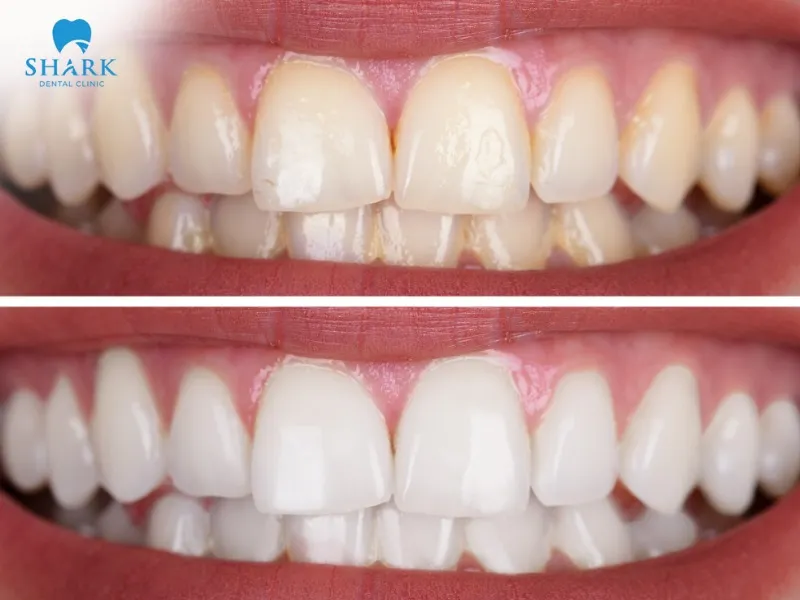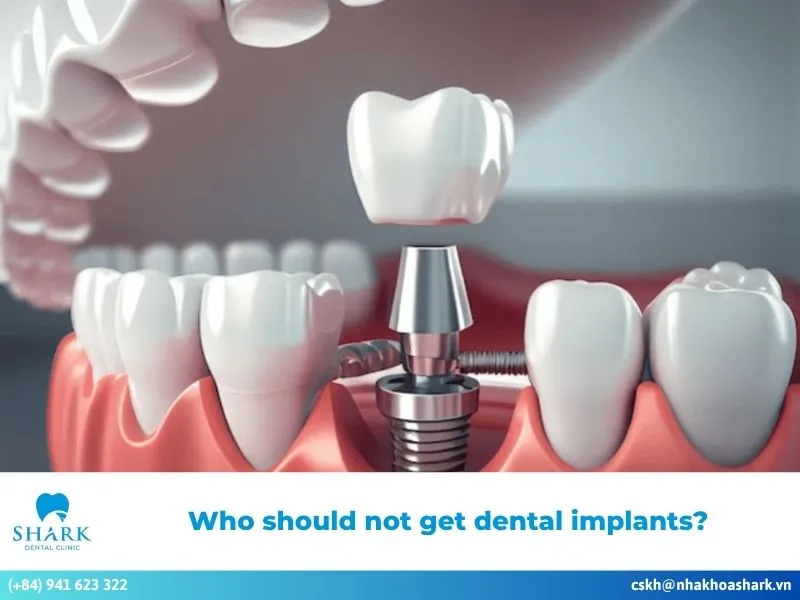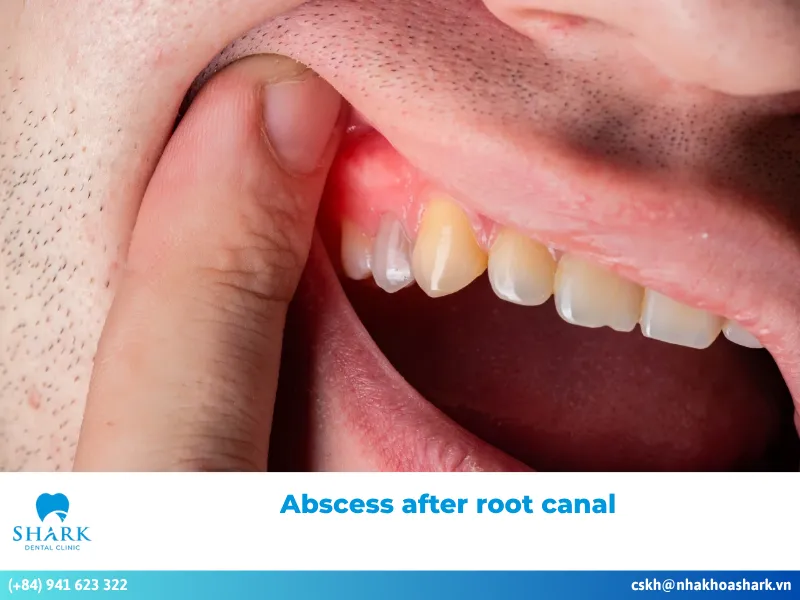Root canal treatment is a common dental procedure designed to prevent serious oral complications when the tooth pulp is damaged or loses its function. But how does this procedure affect your natural teeth, and what are the potential root canal treatment side effects? Let’s explore this topic in detail!
Root canal treatment side effects
At the dental clinic, root canal treatment is performed to clean the damaged pulp tissue within the pulp chamber and root canals. After the cleaning process, the canals are sealed with appropriate materials to limit the presence and impact of harmful bacteria. However, several side effects may occur, including:
Color changes
The dental pulp provides essential nutrients that keep teeth strong and healthy. When the pulp is damaged and requires treatment, the tooth no longer receives nourishment from its internal blood supply. As a result, teeth may become discolored, appearing darker or differing in shade from healthy teeth.

Sinus congestion
One of the less common root canal treatment side effects is sinus congestion. This can occur if fluids from the oral cavity leak into the nasal area during the procedure, particularly if the dentist lacks sufficient expertise.
Over time, these fluids may lead to sinusitis and congestion, causing symptoms such as nasal blockage, headaches, and discomfort. In severe cases, patients may experience prolonged fatigue, shortness of breath, dizziness, and significant disruption to their daily lives.
Reinfection
Although the canals are thoroughly cleaned and sealed with sterile materials after a root canal procedure, a tight seal is crucial. If it is not secure, bacteria can re-enter the canals, leading to reinfection. Patients may notice symptoms like swelling, redness of the gums, or even bleeding around the treated tooth.

Tooth cracking
Some patients may experience cracked or fractured teeth following a root canal. Though not very common, experts indicate that removing the pulp diminishes the tooth’s original strength and elasticity. Consequently, strong biting forces or accidental trauma can make the tooth more susceptible to cracking or breaking.
Other complications
While root canal treatment is generally safe, certain risks can arise if the procedure is not performed correctly. Technical errors or a lack of experience from the dentist may lead to incomplete removal of the pulp or even nerve damage. This can result in persistent pain, discomfort, or further oral health issues.
- Tooth Pain:** In some cases, patients may continue to experience prolonged toothache due to residual infection. This can interfere with eating, speaking, and overall daily activities.
- Numbness in Lips and Cheeks:** If the treated tooth becomes infected, you might feel numbness in the surrounding soft tissues, such as the lips and cheeks. This can lead to swelling and pain, affecting normal communication and pronunciation.
- Gum Swelling and Abscess Formation:** When bacteria remain in the canal due to incomplete pulp removal, an abscess may develop around the tooth. Symptoms include swollen gums, pus discharge, and prolonged discomfort. This condition can also contribute to persistent bad breath.

Although root canal treatment is a routine dental procedure, these potential complications underscore the importance of choosing a reliable clinic with skilled professionals and adherence to proper treatment standards.
How to minimise risks from root canal treatment?
You can significantly reduce and prevent risks associated with root canal treatment by following these practical measures:
Seek early and timely treatment
If you notice signs such as toothache, sensitivity, or bleeding gums, it is important to seek an examination at a reputable dental clinic. Dentists will evaluate the condition of the pulp and perform root canal treatment promptly to prevent the spread of infection to surrounding tissues.
Timely treatment helps preserve your natural teeth, minimize bacterial invasion, and prevent serious oral complications. Receiving treatment at the right time can also make the procedure easier and smoother while reducing unnecessary risks.

Choose a reputable dental clinic
While root canal treatment is generally not overly complex, it requires precision, attention to detail, and skill. Therefore, it is crucial to undergo the procedure at a clinic equipped with modern technology and experienced specialists. Skilled dentists will ensure that the pulp is thoroughly cleaned and the canal is tightly sealed, thus limiting potential risks after the procedure.
Follow a standardized root canal protocol
A successful root canal procedure at a dental clinic consists of essential steps, including a comprehensive examination, administration of anesthesia, creation of access to the pulp chamber, pulp removal, shaping of the canal, and sealing it. Each step plays a vital role in the success of the treatment and must be followed strictly.

>>> See more: How long does a root canal take to heal?
Post-treatment care
After completing root canal treatment, it is essential to adhere to your dentist’s aftercare instructions. Use a soft-bristled toothbrush, dental floss, and interdental brushes to clean your teeth daily. Additionally, rinsing your mouth regularly with salt water or antibacterial solutions can help prevent infection and support healing.
Adjust your diet wisely
Along with maintaining proper oral hygiene, it is important to create a healthy diet plan based on your dentist’s recommendations. Focus on nutrient-rich foods that are soft, easy to chew, and impose minimal pressure on your teeth. Avoid carbonated drinks, as well as chewy or hard foods that can compromise your dental health.

Consider restorative options
Teeth often become weaker and more fragile after root canal treatment, which makes them susceptible to cracks, fractures, or breakage. For this reason, dentists typically recommend restorative solutions such as dental crowns or porcelain veneers. A properly fitted crown not only protects the natural tooth structure and reduces the risk of future infection but also enhances the appearance of your smile with natural-looking color and shape.
Get a comprehensive dental check-up
To minimize complications, it is important to undergo a complete dental check-up before starting root canal treatment. If issues such as cavities, gum disease, or periodontitis are detected, they must be treated thoroughly beforehand. This helps lower the risk of complications and ensures a safer, smoother root canal procedure.

>>> See more: Root canal treatment in Vietnam
Maintain healthy daily habits
Even after completing your root canal treatment, it is essential to maintain good oral care habits. Brush your teeth two to three times daily, follow a balanced diet, and avoid harmful practices such as nail-biting or teeth grinding. These habits will help protect your teeth from cracks, infections, or further damage.
Attend regular dental check-ups
After a root canal, patients should adhere strictly to their dentist’s recommended check-up schedule, which is usually every 3 to 6 months. Routine visits allow your dentist to monitor the healing process, detect early signs of infection or incomplete pulp removal, and take prompt action if necessary.

While root canal treatment is a common and highly effective procedure for preserving natural teeth and preventing infection, it carries potential risks if not performed properly. Therefore, choosing a reputable dental clinic, understanding the treatment process, and maintaining proper aftercare are essential for long-term oral health.
This article from Shark Dental Clinic shares valuable insights into the possible root canal treatment side effects and how to minimize related risks. We hope this information helps you develop an informed perspective on root canal therapy and equips you with the knowledge needed to care for your teeth effectively—keeping your smile strong, healthy, and beautiful.










